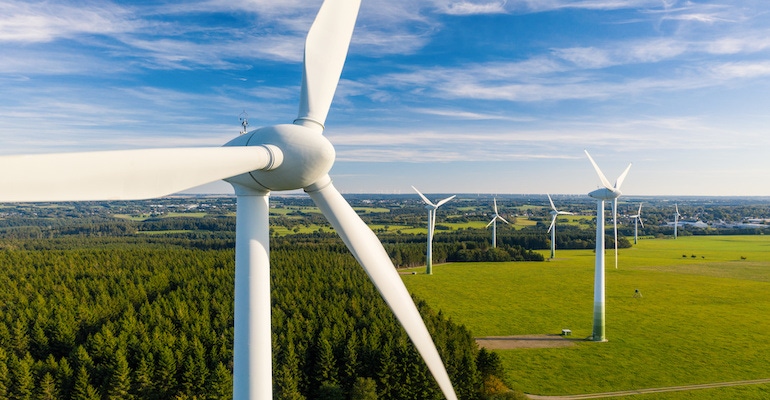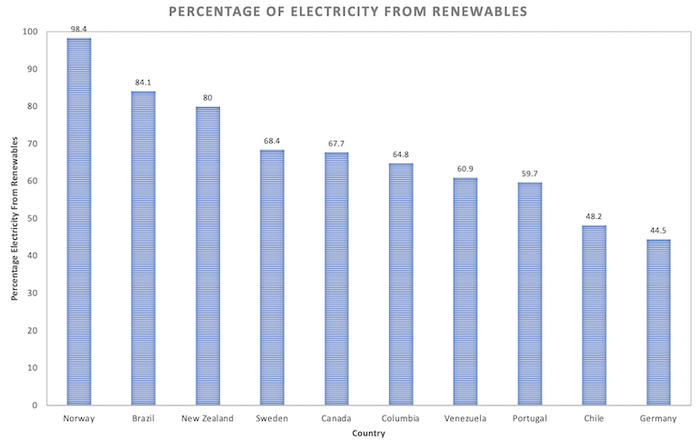Hydro, wind, geothermal, and solar energies are making a difference—in some countries more than others.
August 13, 2021

Each year Enerdata, an independent research and consulting firm specializing in the analysis and modeling of the global energy markets and its drivers, produces its Global Energy Statistical Yearbook. The 2021 Yearbook provides some interesting data on electricity production from renewable energies (hydro, wind, geothermal and solar) when compared to total electricity production.
Key Takeaways:
The share of renewable energy sources (including hydropower) within the global power generation mix rose by 1.8 percent to over 28 percent of the electrical power mix in 2020
In 2020, renewable power generation (including hydropower) rose by over 6 percent, primarily due to growth in wind and solar generation—the share of hydropower has remained at around 16 percent of the global power mix since 2000
Renewables now account for 39 percent of the electrical power generation in the EU, 28 percent in China, 23 percent in India, and 20 percent in the USA, Russia, and Japan

In 2020, renewable energy sources accounted for about 12% of total US energy consumption and about 20% of electricity generation—oil provides over 90 percent of the energy used for transportation. As the electrification of the US transportation system takes hold, those numbers will begin to change.
Meanwhile, here is an interesting history of five renewable energy sources.
Kevin Clemens is a Senior Editor with Battery Technology.
About the Author(s)
You May Also Like





